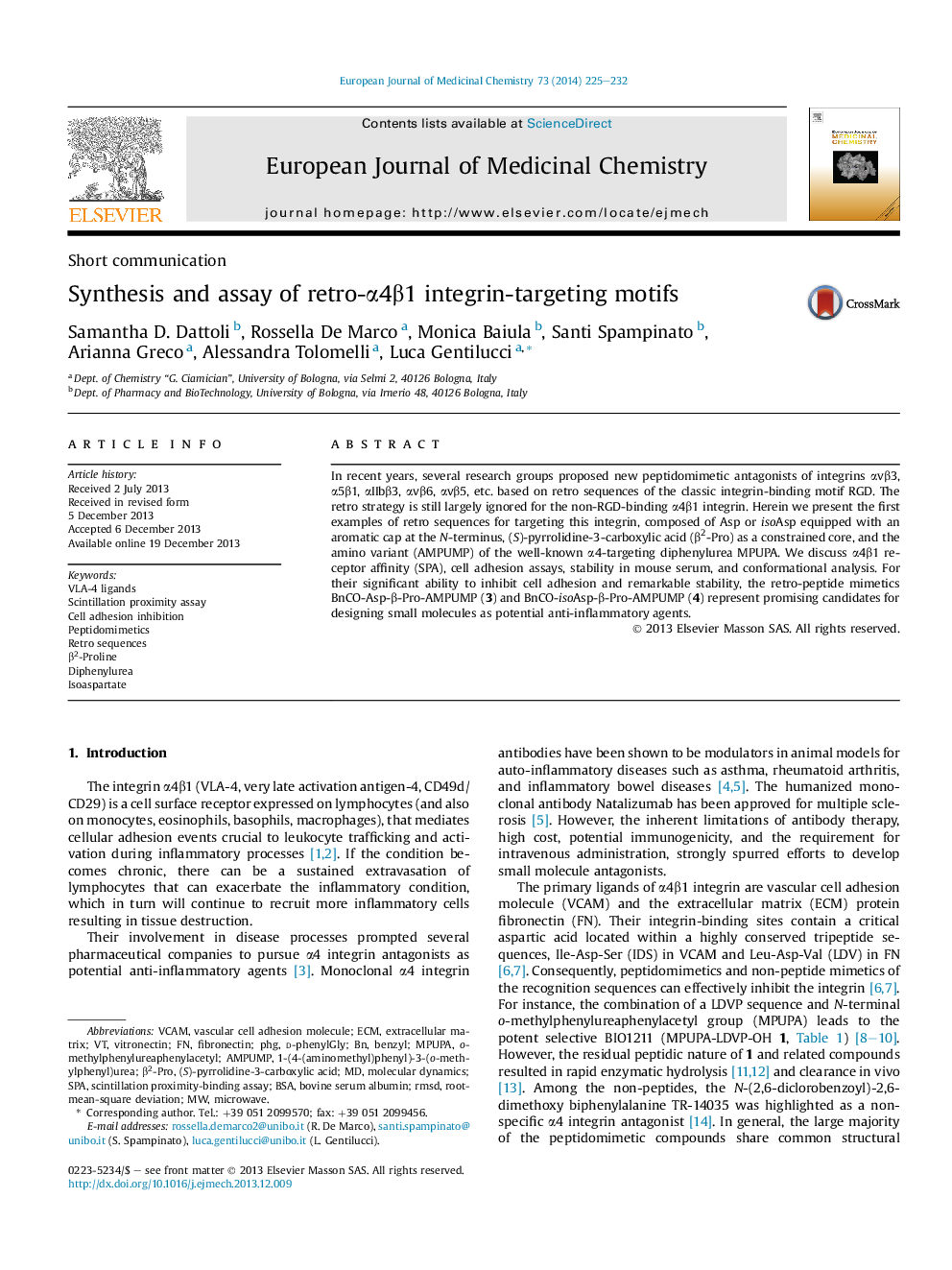| Article ID | Journal | Published Year | Pages | File Type |
|---|---|---|---|---|
| 1395822 | European Journal of Medicinal Chemistry | 2014 | 8 Pages |
•First evidence that retro sequences can be utilized for targeting α4β1 integrin.•Asp or isoAsp and aminomethylphenyl-(o-methylphenyl)urea (AMPUMP) were assembled on β2-isoPro scaffold.•Moderate receptor affinities, good inhibition of cells adhesion.•Retro sequence, isoAsp, and β-amino acid core provided high metabolic stability.
In recent years, several research groups proposed new peptidomimetic antagonists of integrins αvβ3, α5β1, αIIbβ3, αvβ6, αvβ5, etc. based on retro sequences of the classic integrin-binding motif RGD. The retro strategy is still largely ignored for the non-RGD-binding α4β1 integrin. Herein we present the first examples of retro sequences for targeting this integrin, composed of Asp or isoAsp equipped with an aromatic cap at the N-terminus, (S)-pyrrolidine-3-carboxylic acid (β2-Pro) as a constrained core, and the amino variant (AMPUMP) of the well-known α4-targeting diphenylurea MPUPA. We discuss α4β1 receptor affinity (SPA), cell adhesion assays, stability in mouse serum, and conformational analysis. For their significant ability to inhibit cell adhesion and remarkable stability, the retro-peptide mimetics BnCO-Asp-β-Pro-AMPUMP (3) and BnCO-isoAsp-β-Pro-AMPUMP (4) represent promising candidates for designing small molecules as potential anti-inflammatory agents.
Graphical abstractFigure optionsDownload full-size imageDownload as PowerPoint slide
